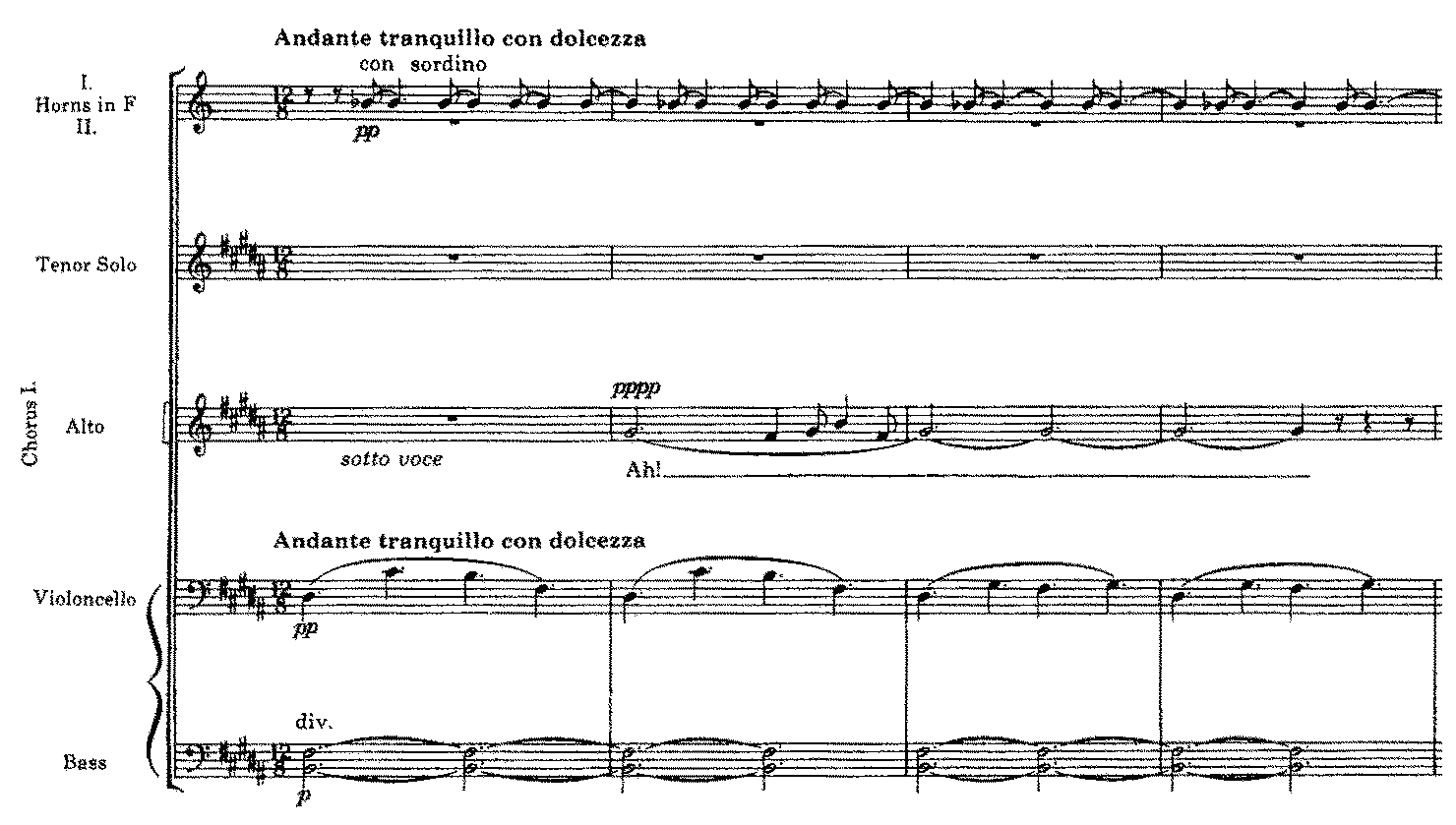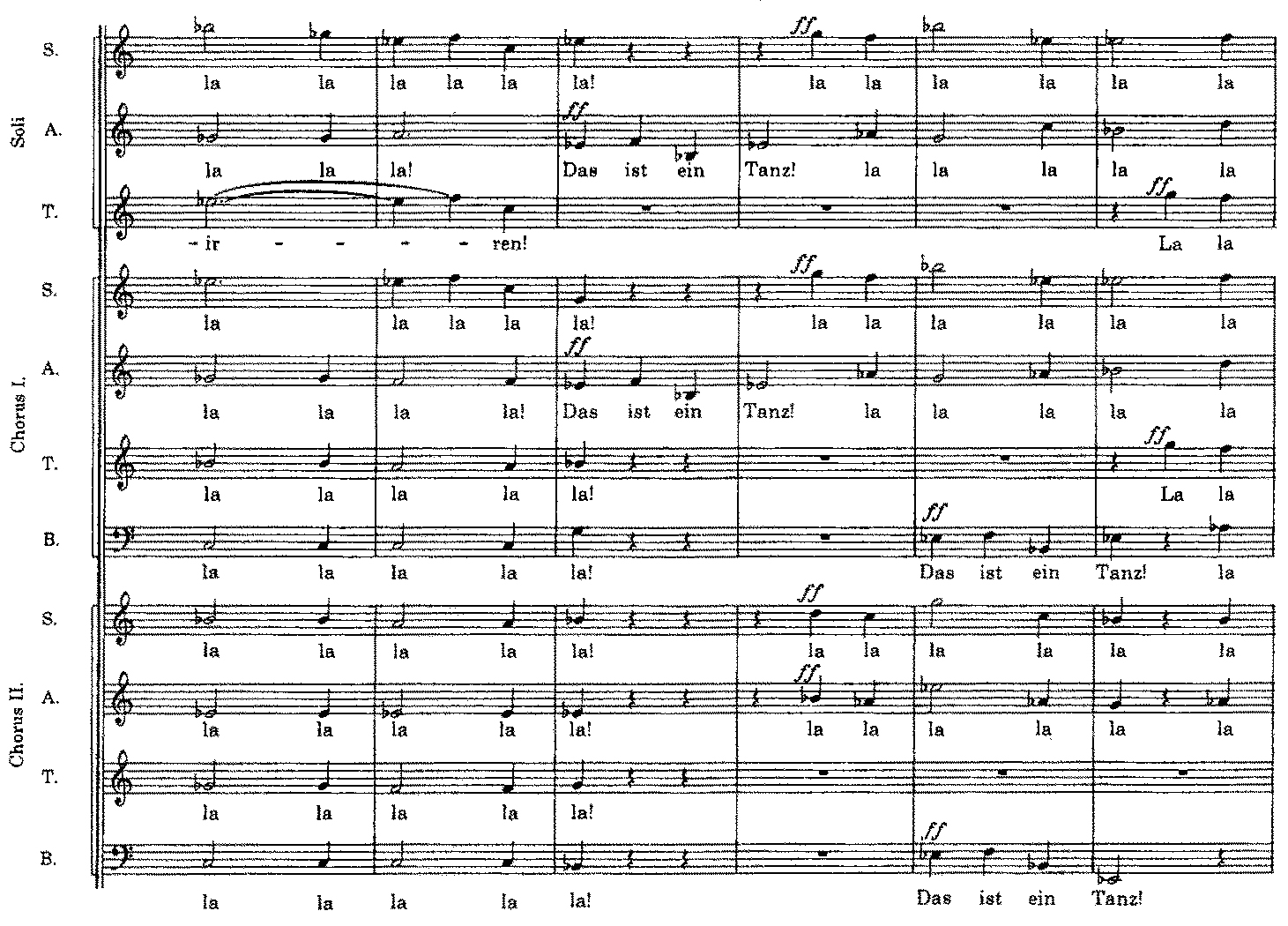Dramatic Vocalise Database
Frederick Delius (1862–1934)
A Mass of Life (1904–5)
In 1904, prior to the 1907 performance of Appalachia, Fritz Cassirer assisted Delius with compiling the text for his A Mass of Life, drawn from Friedrich Nietzsche’s Also sprach Zarathustra. Substantial excerpts from the work, completed in 1904–5, were first heard under Ludwig Hess in Munich on 4 June 1908. Thomas Beecham gave the first complete performance (in an English translation by William Wallace) in London at Queen’s Hall on 7 June 1909.1
A Mass of Life—scored for three soloists (SAT), two choruses, and orchestra—is in two parts, further divided into five and six sections, respectively. The most extended movements of each part are the centralized dance-songs, both occurring as the third section. In addition, both of these dance-songs contain examples of wordless vocalization used to emphasize the spirit of the dance itself.
Part I, no. 3 consists of relaxed outer sections that frame an interior, vigorous dance. In the opening measures, the chorus, singing “Ah!” sets a serene mood before accompanying a texted song first presented by the tenor soloist.

Delius, A Mass of Life, part I, no. 3, mm. 1–4
2As the movement progresses, hints of the approaching dance sound in the guise of a melody sung on the syllable “la” by sopranos and altos from the first chorus.

Delius, A Mass of Life, part I, no. 3, mm. 44–54
3At the height of the movement, the three solo voices and the two mixed choruses sing (with orchestral accompaniment) what may be loosely described as a fugal dance-song without text, a whole interlude on the syllable “la” with occasional interjections of the phrase “Das ist ein Tanz!” [“Now for a dance!”].

Delius, A Mass of Life, part I, no. 3, mm. 220–25
4The second dance-song, part II, no. 3, the great centerpiece of the second part, is introduced by an orchestral evocation of evening. Following this introduction, the choruses and soloists sing an extended vocalized section on the syllable “la,” here representing young maidens dancing in a meadow.

Delius, A Mass of Life, part II, no. 3, mm. 79–82
5The vocal style is similar in approach to that found in Appalachia, however, the length of this passage far exceeds anything encountered in the earlier work.
(Nauman 2009, 126–30)
Examples | Comments |
| Part I, No. 3, mm. 1–6 |
| Part I, No. 3, mm. 43–55 |
| Part I, No. 3, mm. 220–28 |
| Part II, No. 3, mm. 78–82 |
| A Mass of Life, Part I, No. 3 (complete) |
| A Mass of Life Part II, No. 3 (complete) |
Footnotes
1 For a review of the London premiere see Anonymous, “‘A Mass of Life,’” Musical Times 50 (1909): 465–66.
2 Frederick Delius, A Mass of Life, rev. and ed. Sir Thomas Beecham, in Complete Works, vol. 10 (London: Boosey & Hawkes, 1987), 27
3 Ibid., 31–2.
4 Ibid., 51.
5 Ibid., 112.